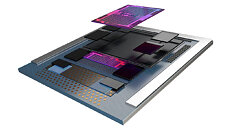
Intel Meteor Lake Can Play Videos Without a GPU, Thanks to the new Standalone Media Unit
Intel's upcoming Meteor Lake (MTL) processor is set to deliver a wide range of exciting solutions, with the first being the Intel 4 manufacturing node. However, today we have some interesting Linux kernel patches that indicate that Meteor Lake will have a dedicated "Standalone Media" Graphics Technology (GT) block to process video/audio. Moving encoding and decoding off GPU to a dedicated media engine will allow MTL to play back video without the GPU, and the GPU can be used as a parallel processing powerhouse. Features like Intel QuickSync will be built into this unit. What is interesting is that this unit will be made on a separate tile, which will be fused with the rest using tile-based manufacturing found in Ponte Vecchio (which has 47 tiles).
Intel Linux PatchesStarting with [Meteor Lake], media functionality has moved into a new, second GT at the hardware level. This new GT, referred to as "standalone media" in the spec, has its own GuC, power management/forcewake, etc. The general non-engine GT registers for standalone media start at 0x380000, but otherwise use the same MMIO offsets as the primary GT.
Standalone media has a lot of similarity to the remote tiles present on platforms like [Xe HP Software Development Vehicle] and [Ponte Vecchio], and our i915 [kernel graphics driver] implementation can share much of the general "multi GT" infrastructure between the two types of platforms.













































